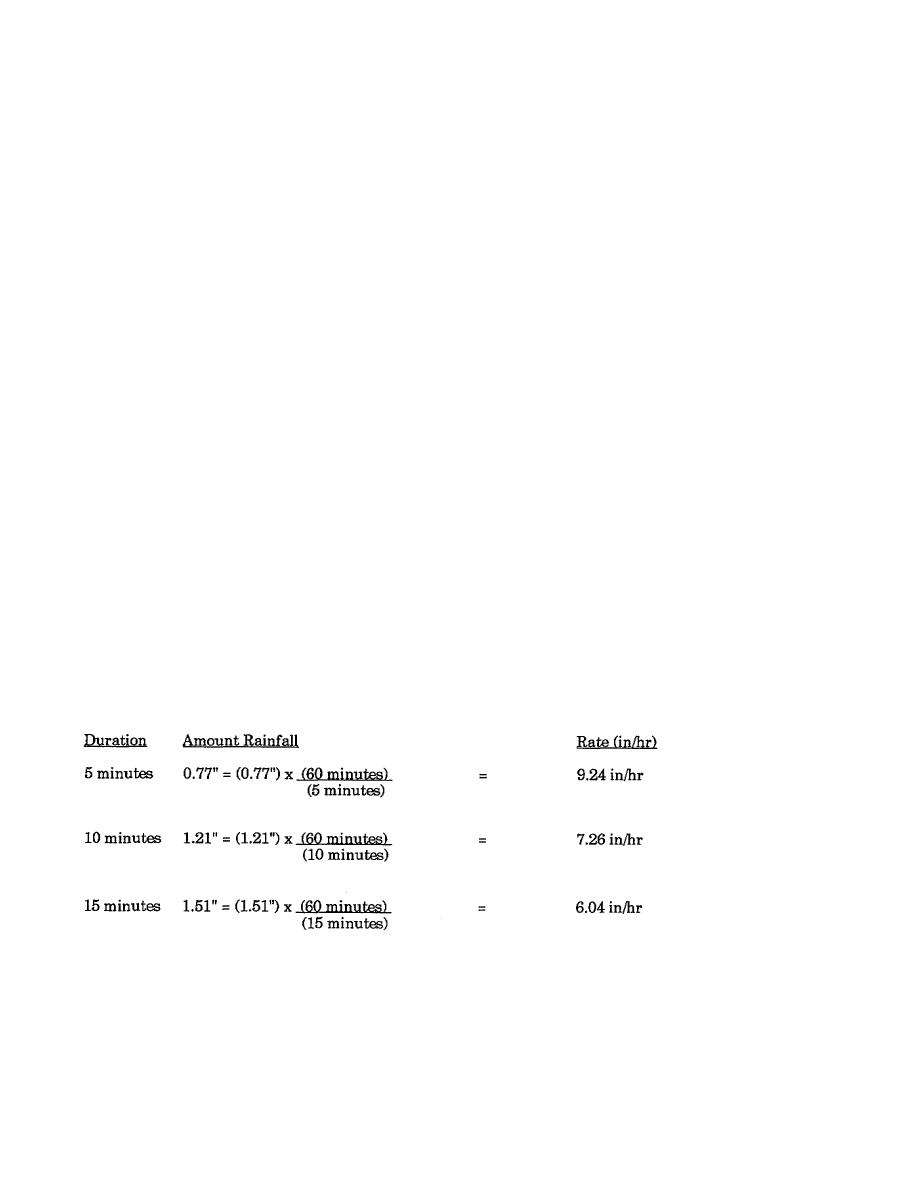
To read a value on the isohyetal map, locate the project location and then read the value of the appropriate
isohyet(s). Do not interpolate. Use the following rules when determining the rainfall intensity on the map:
When your project location touches an isohyet, read the value of that isohyet.
If your project location falls between two isohyets, use the larger value.
Within an encircling isohyet, read the value of the encircling isohyet.
A few examples--
Southern Australia
1.0 in/hr
North Dakota
1.5 in/hr
Florida
2.5 in/hr
Washington, D.C.
1.5 in/hr
DEPTH OF INTENSITY CONVERSIONS
The intensity of rainfall is always expressed in the units of in/hr. When listening to a weather report, you may
hear how much precipitation has fallen in a specified period of time, quite often the last 24 hours. This is the total
amount of rain that fell. If it is stated that the total amount of rain that fell in the last 24 hours is 2 inches, you
have no idea what the intensity, or rate of rainfall was. Did the rain fall evenly for 24 hours; in which case the
rate would be approximately 0.083 in/hr (2 inches divided by 24 hours), or did the entire amount of rain fall in 30
minutes; in which case the intensity is 4 in/hr (2 inches divided by 0.5 hours). As you can see, the rate can make a
big difference. In the first case, there was a nice, gentle rain, while in the second case, there was a real "gully
washer." The gentle rain would cause little, if any, flooding; the heavy rain would probably cause severe ponding
and flooding in some locations.
Using pinpoint data obtained for the Washington, D.C., area over a 50-year period, data from the worst storm (the
50-year storm) can be converted from depth to intensity as follows:
EN5465
1-8



 Previous Page
Previous Page
